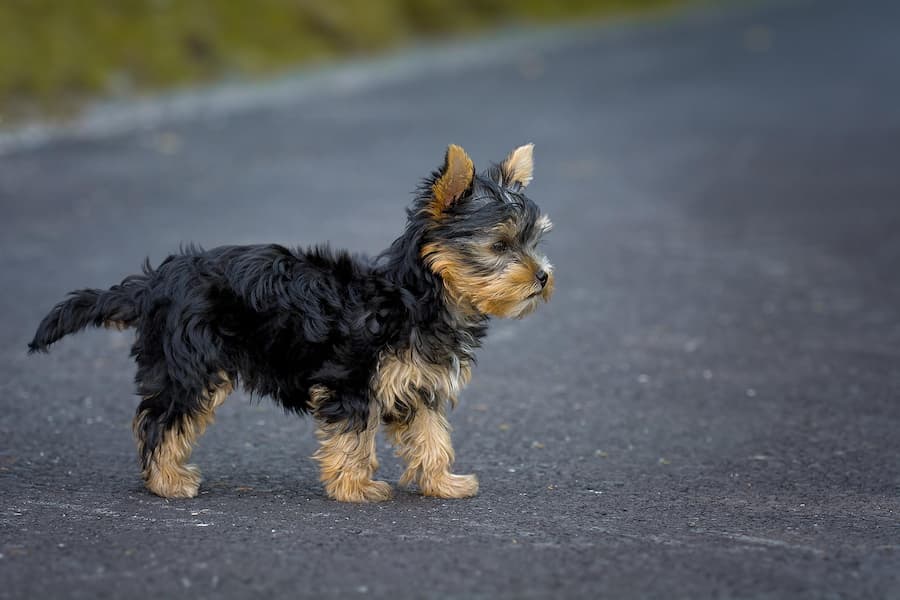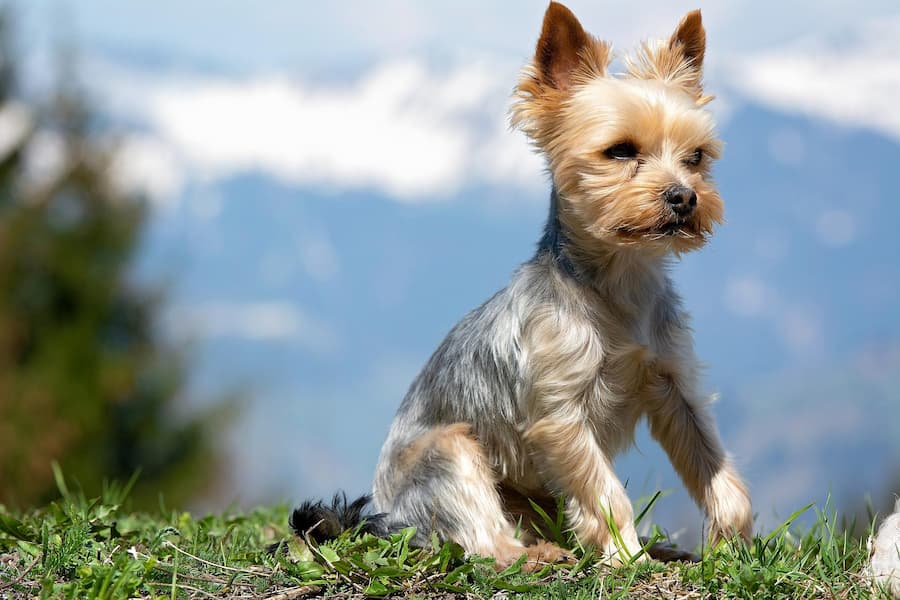All Yorkies are born black and tan, sometimes black and brown. As they grow, Yorkie puppies gradually change into the adult dog’s final color. So, what are the Yorkshire Terrier Colors?
Quick Navigation
What Are the Yorkshire Terrier’s Colors?
Adult Yorkshire Terriers come in the following combination of colors:
- Blue and Tan
- Black and Tan
- Black and Gold
- Blue and Gold

Although not recognized as pure breeds, you can find some Yorkie colors like brown, gold, and red in Yorkies that have been crossbred with other species. If a Yorkie has white patches, you are likely looking at a different breed called the Biewer Terrier or Parti Yorkie.
Yorkies’ glossy, colorful coats that almost resemble human hair make them unique and easy to identify. Let’s dive into how the different colored Yorkshire Terriers appear and their genetics’ influence on their coat color change.
Official Colors of Yorkies and Their Appearance
Your Yorkie puppy has a gene called ‘the graying gene’ that affects how much its black and tan colors will fade. Your Yorkshire Terrier can end up having the following combination of colors depending on the number of graying genes it has:
Blue and Gold Yorkies
Blue and gold Yorkies are the most common Yorkshire Terriers with two greying genes. For most Yorkies, the two greying genes dilute the black color to blue and the tan color to gold. This color combination is the most recognizable Yorkie; however, their undercoat may be a darker blue and bronze, making your dog look uniquely darker if you give it a close shave.
Black and Tan Yorkies
Your dog lacks graying genes if your Yorkie retains its black and tan color at maturity. This combination mostly appears with black color on the torso and back and brown color on your Terrier’s legs, face, and chest. There may be a variation in the placement of the black and brown stains on your Yorkie; however, these variations are rare and few.
Black and Gold Yorkies
Black and gold Yorkies have one graying gene that lightens the brown color on Yorkshire coats into a golden color. Like in the black and tan Yorkies, the black color is prominent on the back and torso, while the golden color is prominent on the face, legs, and belly.
Blue and Tan Yorkies
Blue and tan Yorkies have one graying gene that lightens Yorkshire’s black color into a blue or close to shimmering grey when your puppy is six months old. The brown patches are commonly found around the mouth, the tip of the ears, the chest, and the feet.
Nonstandard Color Variations of Yorkshire Terriers
Although the four color combinations above are the standard and officially recognized colors of Yorkshire Terriers, you may find some Yorkies with shades that vary from the norm. Most of these Yorkies receive their unique nonstandard color due to crossbreeding.
Breeding dogs for color can be detrimental to their overall health. Be cautious when buying such crossbreeds, and check the parent history records to ensure your dog hasn’t inherited genetic complications.
Chocolate or Brown Yorkies
Chocolate Yorkies have a recessive gene called the b allele gene that causes the Yorkie’s brown color. These dogs are attained from crossbreeding Yorkshire Terriers with breeds with a recessive gene to lighten their dark colors.
Blue Yorkies
Newly blue Yorkies may have genetic defects that make them live very short lives. A blue Yorkie is a tragic coincidence that results in a poor quality of life for your Yorkie. Your veterinarian may suggest you put your Blue Yorkie down as a more humane option.
Black Yorkies
Black Yorkies are not recognized as a Yorkie breed. They result from crossbreeding Yorkies with another species to achieve their black coat. Be keen on the parent history and the health of these dogs.
Red Yorkies
Some Yorkies are born with red fur on their legs. Their red color can be due to a recessive gene carried dormant through generations. Their hair becomes stiff and wiry as the dog takes up the colors red and black as adults.

Golden Yorkies
Some Yorkies have much more golden hair than blue hair, especially after three years. Sometimes, they can turn out to be golden or all blonde. Golden Yorkies are not considered purebred Yorkshire Terriers.
Related Questions
In case you have a question in mind about the colors of Yorkies, I’ve answered some related questions below:
Are There White Yorkshire Terriers?
Dogs resembling Yorkshire Terriers that have white fur are called Biewer Terriers. Purebred Yorkshire Terriers cannot have any white color. Sometimes Yorkies with white patches can be referred to as Parti-Yorkies.
When Do Yorkshire Terriers Change Colors?
The graying gene in Yorkshire Terrier puppies begins taking action when your puppy reaches six months. Although this can vary from dog to dog, your Yorkie may change color for 1 to 3 years before attaining its final color. Some Yorkies may continue to change their coat color even in adulthood.
Conclusion
Blue and Golden Yorkies are the most popular and easy to come across. Be wary of Yorkies with non-ordinary colors other than the four color variations. They are usually crossbreeds and not pure breeds.
